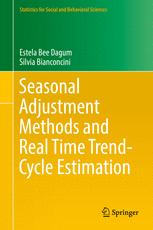

Most ebook files are in PDF format, so you can easily read them using various software such as Foxit Reader or directly on the Google Chrome browser.
Some ebook files are released by publishers in other formats such as .awz, .mobi, .epub, .fb2, etc. You may need to install specific software to read these formats on mobile/PC, such as Calibre.
Please read the tutorial at this link: https://ebookbell.com/faq
We offer FREE conversion to the popular formats you request; however, this may take some time. Therefore, right after payment, please email us, and we will try to provide the service as quickly as possible.
For some exceptional file formats or broken links (if any), please refrain from opening any disputes. Instead, email us first, and we will try to assist within a maximum of 6 hours.
EbookBell Team

5.0
100 reviewsThis book explores widely used seasonal adjustment methods and recent developments in real time trend-cycle estimation. It discusses in detail the properties and limitations of X12ARIMA, TRAMO-SEATS and STAMP - the main seasonal adjustment methods used by statistical agencies. Several real-world cases illustrate each method and real data examples can be followed throughout the text. The trend-cycle estimation is presented using nonparametric techniques based on moving averages, linear filters and reproducing kernel Hilbert spaces, taking recent advances into account. The book provides a systematical treatment of results that to date have been scattered throughout the literature.
Seasonal adjustment and real time trend-cycle prediction play an essential part at all levels of activity in modern economies. They are used by governments to counteract cyclical recessions, by central banks to control inflation, by decision makers for better modeling and planning and by hospitals, manufacturers, builders, transportation, and consumers in general to decide on appropriate action.This book appeals to practitioners in government institutions, finance and business, macroeconomists, and other professionals who use economic data as well as academic researchers in time series analysis, seasonal adjustment methods, filtering and signal extraction. It is also useful for graduate and final-year undergraduate courses in econometrics and time series with a good understanding of linear regression and matrix algebra, as well as ARIMA modelling.